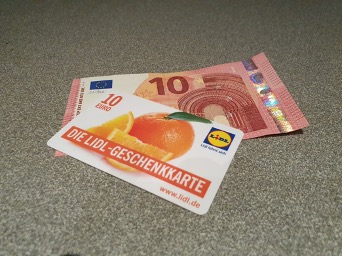Payment systems regulatory law has recognized three types of money so far: cash (banknotes and coins), scriptural money (also known as book money), and e-money (as defined in the Second E-Money Directive/EMD2). “Funds” (as defined in Art. 4 No. 25 of PSD2) exist only when one of these three regulated types of money is used for payment. It remains to be seen whether and how certain cryptocurrencies will complement this monetary trinity after adopting MiCAR (see my last blog post for more on this). Do all types of funds need to be usable as a universal medium of exchange? This question recently played a role in a trial at the district court (Landgericht) Frankfurt am Main.
Monetary trinity: cash, scriptural money, e-money
Cash has existed in coins for over 2,500 years; scriptural money is only slightly younger (corn giro in Ptolemaic Egypt). Digital e-money, on the other hand, is still a youngster with the age of (about) 25 years and only began to be domesticated with the First E-Money Directive (2000). At first, this monetary innovation was considered to be subsumed under cash and scriptural money. But a digital “cash” (bearer instrument in the form of bits and bytes) is fundamentally different from cash and scriptural money. So: new wine requires new wineskins or new laws. In retrospect, the regulation was somewhat premature because genuine e-money did not establish itself on the market (neither as card nor as internet money).
The new, but almost empty wineskin, was then filled with another liquid: previously unregulated funds deposited into accounts outside the traditional current account system (prepaid). This is often a closed account system. PayPal is the best-known example of this so-called account-based e-money. The account is accessed online or by card (so-called prepaid cards). An important prerequisite for the classification as e-money is accepting the money by one or more payees who are not identical with the issuer. Accordingly, the acceptance of e-money is always limited or often very limited, compared with its older siblings. Depending on the limitation’s nature, such payment instruments may fall under the so-called scope exception for limited networks under Article 3k of PSD2. In this case, regulation as e-money does not apply.
In contrast to the original e-money, e-money 2.0 as an account-based payment instrument is de facto more of a scriptural money variant but is classified de jure as e-money. Consequently, e-money is not scriptural money for regulatory purposes, nor is it a special form of scriptural money. So, we have two completely different types of wine in the new wineskin. If any crypto assets are added as e-money tokens soon, then good night! I wonder if this brew still tastes good.
Miles & More in court
E-money is a complex product from a legal point of view and a real challenge for a court. This was what I have experienced in August 2020 as a trial observer at the district court (Landgericht) Frankfurt am Main, where the exciting question of whether the multi-merchant loyalty scheme of Lufthansa (“miles & more”) should be classified as e-money was being heard (see Handelsblatt: “Streit um Bonus-Meilen”). The regulatory classification as e-money would have significant consequences (e.g., redeemability of miles at par in euros) for Miles & More and comparable multi-merchant bonus programs such as Payback (see also my blog post „E-Loyalty: To be or not to be“) yet very well versed in the terminology and frequently confused the term “electronic money” with that of an “electronic means of payment”. Now, the train of thought is not completely absurd: e-money = money = means of payment, and the “E” is the abbreviation for “electronic”. The judge also adopted a thesis put forward by the defendant in a professorial opinion: Money, and therefore e-money, is supposed to fulfil the function of a neutral “universal medium of exchange.” It should be clear what results from such lines of thought: LH miles are obviously not a universal medium of exchange and therefore not e-money either. What was plausible for the judge caused me to shake my head. Unfortunately, as a trial observer, you are allowed to move any body parts in court quietly, but you are not allowed to speak up. Otherwise, I would have pulled my Lidl gift card out of my wallet, held it up and said: “Dear Judge, this is also e-money! Would you consider this gift card to be a universal medium of exchange?”
In addition to the Lidl gift card (at this time e-money still issued by the Wirecard bank), there are other e-money products or “universal means of exchange” in Germany with a very limited acceptance and/or selection of products and services, for example:
- Esprit Gift Card (issued by the e-money institution Esprit Card Services),
- Aldi gift card (issued by Helaba),
- Stuttgart City Card (issued by Landesbank Baden-Württemberg)
and last but not least
- GeldKarte as an application on the giro card (issued by many credit institutions) which can nowadays often only be used at vending machines (cigarettes, public transport, parking garages), in canteens and perhaps in some soccer stadiums.
How much money is in e-money?
The theory that e-money should be a universal medium of exchange is based on several misconceptions.
The term “e-money” was coined by central banks in the mid-1990s for digital units of value that could be used for different purposes (multi-purpose) as a means of payment at the physical point of sale or on the internet. The use of the term “money” goes back to the theoretical and then actually expected potential of these new products. The designation as “money” did not include a target specification.
The description of e-money as an “electronic substitute for coins and banknotes” according to recital No. 13 of the Second E-Money Directive (EMD2/2009) is also not a target specification but a relic from the First E-Money Directive (EMD1/2000) in which the concept of the products at that time (mainly chip cards for the payment of tiny amounts) is described (recital No. 3):
“For the purposes of this Directive, electronic money can be considered an electronic surrogate for coins and banknotes, which is stored on an electronic device such as a chip card or computer memory and which is generally intended for the purpose of effecting electronic payments of limited amounts.” (bold and underlined by author)
Also, the factual characteristic as “monetary value” according to the legal definition or as “value” (recital No. 7 of EMD2) indicates a weakening differentiation compared to the conventional term “money.” Accordingly, in the leaflet “Hinweise zum Zahlungsdiensteaufsichtsgesetz (ZAG)” amended on 29.11.2017 – BaFin defines the term “monetary value” as follows:
“Electronic money is first and foremost a monetary value. A monetary value is any kind of means of payment. In addition to legal tender, the concept of monetary value covers any kind of medium of exchange that is generally accepted as payment for particular goods or services, or even only in a particular socio-cultural environment, or even only by the parties to a multilateral framework agreement.” (underlined and translated by author)
The legal definition of e-money as having “monetary value” implies in no way that e-money has to fulfil the function of a neutral universal medium of exchange or other monetary functions. The decisive factor is exclusively the payment function in a three-party relationship.
The above examples show that not only an international payment scheme like PayPal but also means of payment with a highly limited acceptance can be regulated as e-money. This also applies to bonus miles in a multi-merchant loyalty system if the miles acquired by the cooperation partners in exchange for conventional money (prepaid!) can also be used as a means of payment besides the issuer. Unfortunately, the ZAG notes of the BaFin does not provide any clear and consistent statements in this regard.
What was the outcome of the trial? There has been no continuation of the trial or verdict so far. Presumably, the opposing parties agreed. This is a pity with regard to the hoped-for gain in knowledge because the topic has been controversially discussed in the scientific literature since the initial steps for regulation of this new-born child (1999).
Cover picture: Copyright © Adobe Stock / gearstd





